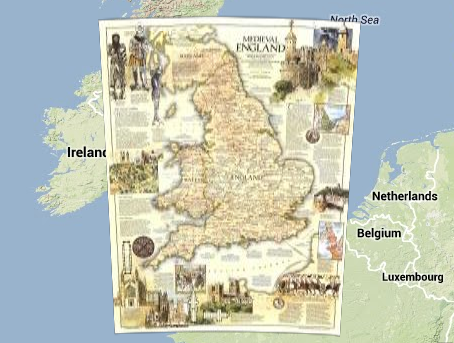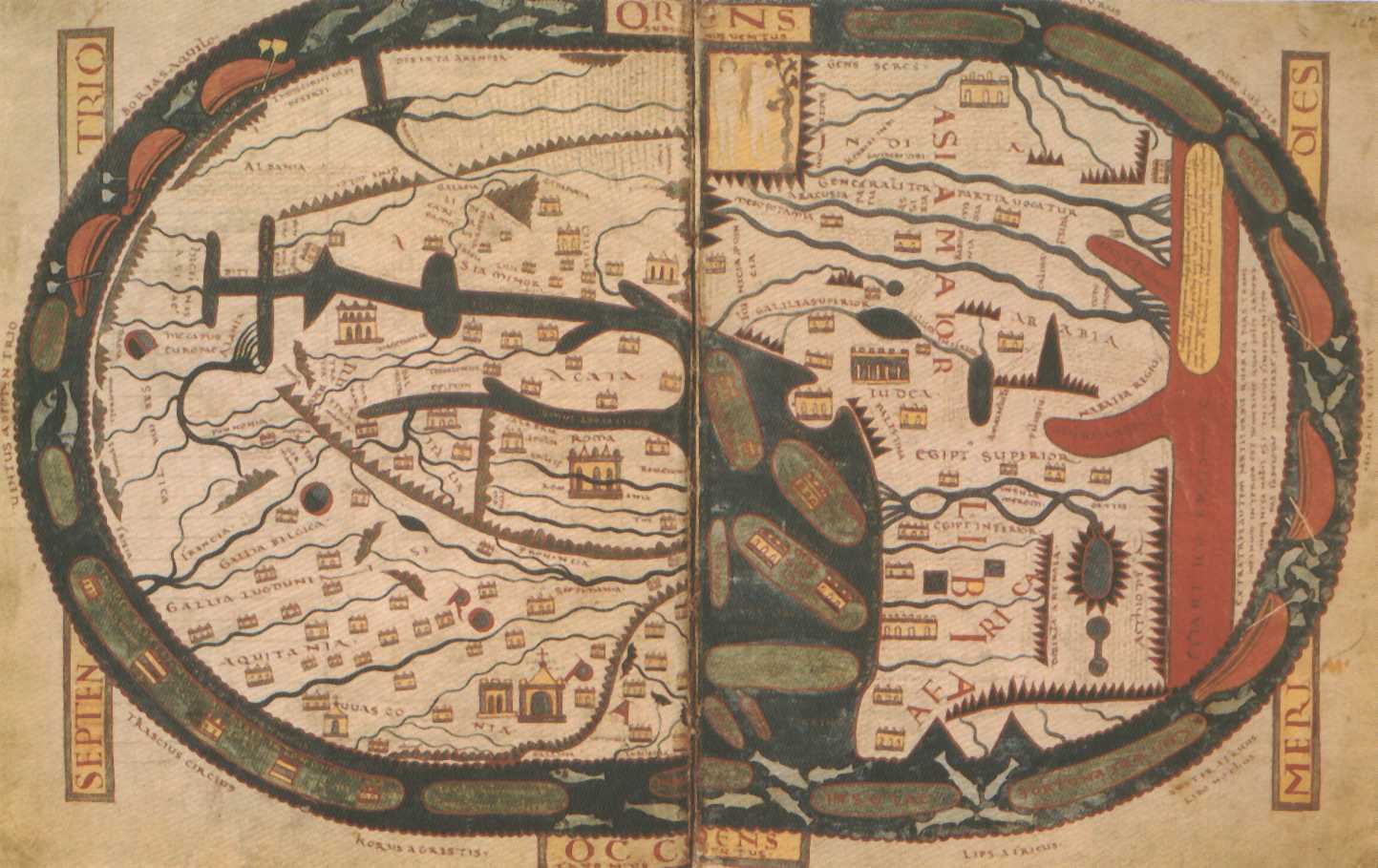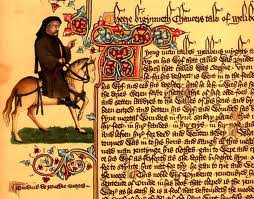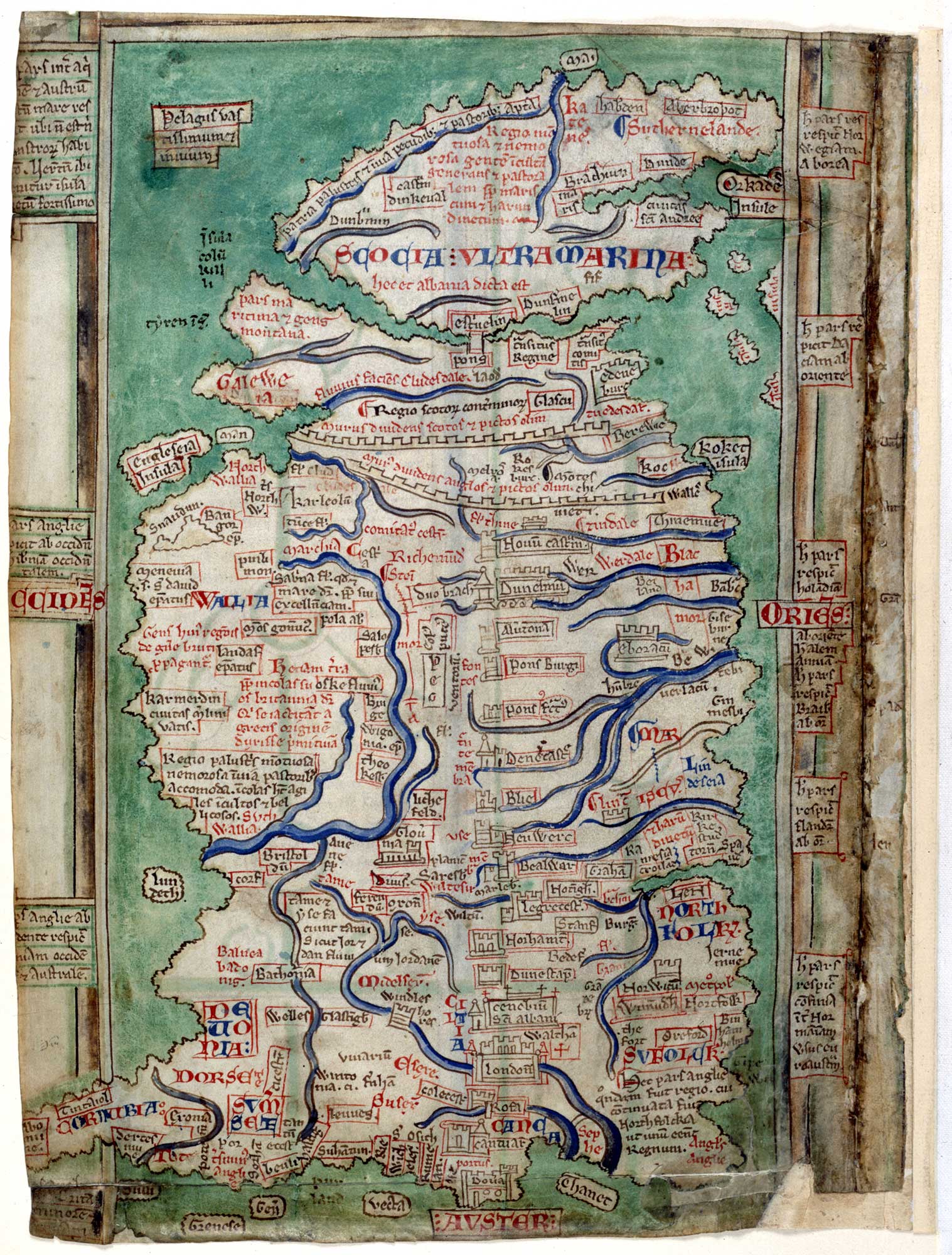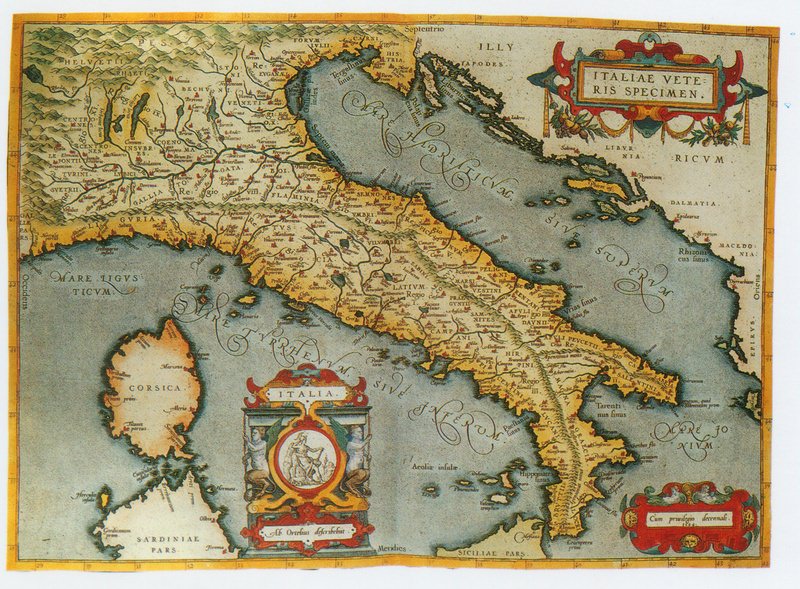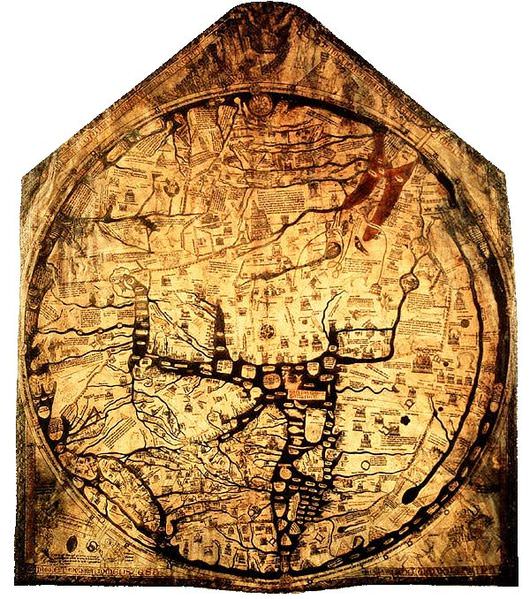Vespucci’s Triangle and the Shape of the World
Interdisciplinary interactions between sixteenth-century travellers and cosmographers produced visual models that challenged normative modes of visual thinking, even as they tried to clarify ideas about the earth’s surface.
Medieval England map on Google Maps
Google and National Geographic are teaming up to share over 500 of the maps created by National Geographic Magazine.
Pelagios Project to give better understanding of ancient and medieval maps
A collaborative project is bringing together maps and geographical texts from Antiquity and the Middle Ages in a new online database that will allow researchers and the general public to explore online the changing historical significance of many of the world’s most famous cities, as well as smaller urban centres.
Ten Beautiful Medieval Maps
Our list of the best medieval maps – ten maps created between the sixth and sixteenth centuries, which offer unique views into how medieval people saw their world.
The so-called Genoese World Map of 1457: A Stepping Stone Towards Modern Cartography?
Around the time of Christopher Columbus’s birth, we find on the shores of the Mediterranean Sea, especially in the north of Italy, a variety of people particularly interested in problems of geography and cartography.
‘Fromm thennes faste he gan avyse/This litel spot of erthe’: GIS and the General Prologue
This paper was given at the Canada Chaucer Seminar on April 27, 2013.
Queen of All Islands: The Imagined Cartography of Matthew Paris’s Britain
In the middle decade of the thirteenth century, the Benedictine monk and historian Matthew Paris drew four regional maps of Britain. The monk’s works stand as the earliest extant maps of the island and mark a distinct shift from the cartographic traditions of medieval Europe.
Maps Illustrating the Viking Invasions of England
The accompanying maps, which were prepared for lecture-purposes, may perhaps be useful to others who want to illustrate a popular account of the Viking invasions of this country
A Peripheral Matter? Oceans in the East in Late Medieval Thought, Report and Cartography
Focusing in particular on the southern and eastern parts of the Ocean Sea, this article traces the broad contours of a representational and conceptual shift brought about, I argue, by the interplay between geographical thought and social (navigational, mercantile) practice.
Reflection of European Sarmatia in Early Cartography
While looking for the origins of the state of Lithuania, it is the study of old maps that helps solve a number of riddles, so far weighing on the history of our nation. Historical data, traced in maps and their images, unrestricted by any political, religious or pseudo- scientific taboos, allow us to cast a broad view on the dim and distant past of our state.
500 year old map of ‘America’ discovered in Munich
A previously unknown version of Martin Waldseemüller’s famous world map has been disocvered in the collections of the University Library in Munich.
When Did Historical Atlases Really Originate?
Renaissance geography began in the early 1400s with the translation from Greek and dissemination among scholars of the Geographia or Cosmographia by the second-century Alexandrian scientist Claudius Ptolemy.
Mapping Metageographies: The Cartographic Invention of Italy and the Mediterranean
This article discusses the emergence of Italy as a discrete object in the Mediterranean in the history of Western cartography. In particular, it focuses on different coexisting Renaissance mapping traditions that rested on two opposed spatial understandings and experiences of the basin
Exploring Byzantine Cartographies: Ancient Science, Christian Cosmology, and Geopolitics in Imperial-Era Mapping
Dr. Papadopoulos will explain how the study of Byzantine maps illuminate how Balkans and Eastern Mediterranean people understood themselves, their belief systems, and their political positionality in territorial terms.
Paradise in Africa: The History of a Geographical Myth from its Origins in Medieval Thought to its Gradual Demise in Early Modern Europe
Where was Paradise to be found? In this regard, a considerable number of different locations have been proposed.
Making a Mappamundi: The Hereford Map
Produced some seven hundred years ago, a large map of the world that is housed today in the cathedral at Hereford, on the English border with Wales, is a great encyclopedia of knowledge imprinted and illustrated on a single page, but a page that measures over five feet long running vertically down the middle and almost four-and-one-half feet horizontally.
Sayonara Diorama: Acting Out The World As A Stage In Medieval Cartography And Cyberspace
: Sayonara Diorama was a multiple-site, electronic-media performance production, written and produced by the author, featuring a repertory company of robots and human actors.
“Surat Bahr al Rum” (Picture of the Sea of Byzantium): Possible Meanings Underlying the Forms
In this paper I will display, examine, and deconstruct the ‘classical’ medieval Islamic conception of the Mediterranean as seen through colorful, miniature maps found in medieval Arabic and Persian geographical manuscripts from the 11th to 17th centuries.
Al-Idrisi and His World Map (1154)
Working for eighteen years under the patronage of the Norman King Roger II Guiscard of Sicily, who gathered scholars from many regions at his court in Palermo, the Moroccan geographer Al-Idrīsī in 1154 completed a description and an atlas of maps of the known world.
Fra Mauro’s world map (c. 1448-1459): mapping, mediation and the Indian Ocean world in the early Renaissance
Begun around 1448 and completed some time before 1459, Fra Mauro’s World map, illustrated in the figure accompanying this article, is a beautiful object.
The Power of Disembodied Imagination: Perspective’s Role in Cartography
The Renaissance flowering of cartographic activity following rediscovery of Ptolemy’s formulae for map projection is well documented, as are connections between this rediscovery and the oceanic expeditions subsequently undertaken during ‘The Age of Discovery’
The Medieval and Renaissance Transmission of the Tabula Peutingeriana
Some time ago close correspondences were discovered between the content of the Tabula and a very unusual text composed in the eighth century, the Cosmographia of the Anonymous of Ravenna.
More Vinland maps and texts. Discovering the New World in Higden’s Polychronicon
This present essay seeks to contribute to the debates over the early mapping of America by investigating the possibility that the Vinland Map (regardless of authenticity) is not the sole visual representation of Norse America, and certainly not the earliest. Rather, the earliest surviving maps of America appear to be a series of T–O derivative maps produced roughly 150 years before the voyages of Columbus as illustrations to Ranulf Higden’s Polychronicon.
Fiorenza: Geography and Representation in a Fifteenth Century City View
Of the representations studied by art history, topographic images – and city views first in time – are among the most likely to share the informational requirements of modern map making.
Local and Regional Cartography in Medieval Europe
This article examines medieval cartography.

